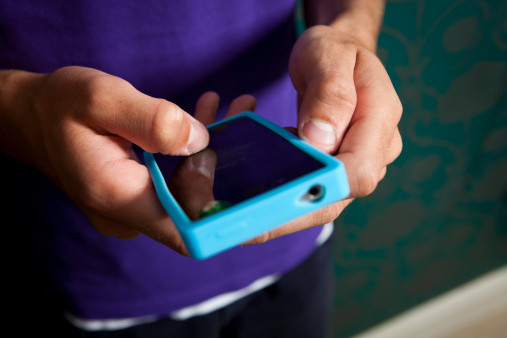What's a smartphone thumb? Excessive texting is leading to more cases of the repetitive strain injury
Find out about the painful condition, why people get it, and how you can prevent it.

Overusing smartphones, especially when texting, is leading more and more people to develop a medical condition known as 'smartphone thumb'.
Dr Kristin Zhao, a biomedical engineer at the Mayo Clinic in Rochester, Minnesota, along with her team has been studying the condition for years and says it is plaguing more people than ever. His research shows that women are more likely to get the condition as their bone structure is weaker than that of men.
What is a smartphone thumb?
Medically categorised under Repetitive Strain Injuries (RSI), a smartphone thumb occurs when a patient experiences pain due to the repetitive movements of texting. Although the condition is not new and factory workers experienced this RSI for decades, it is becoming more widespread in the digital age with the excess use of personal devices, which gives it the name 'smartphone' thumb.
What causes this condition?
A typical RSI is a result of inflammation and possibly even damage of the muscles, tendons, ligaments and/or nerves of the part of the body that is repeatedly used – over hours, days and weeks. In the case of the smartphone thumb, the repetitive movements of texting cause tiny tears in the muscles and tendons due to which they contract and this decreases the range of motion.
"One of the hypotheses is that the joints get loose and lax, and because of that, the bones kind of move differently than they would in a normal situation," said Mayo's Zhao.
Zao says the movements we require our thumbs to make as we hold our phones are awkward . It requires some force through the thumbs and is not just free movement in space. Consequently a person experiences pain, stiffness and sometimes even numbness and hypersensitivity to touch.
How to prevent the smartphone thumb
More and more people are complaining about the condition each year, say doctors at the Mayo Clinic. In fact children, who use smartphones and devices more often than before, may be more susceptible to such a condition at a later age.
Zhao suggests giving your thumbs a break and substituting the thumb with other fingers like the forefinger to scroll the screen. Alternatively, she promotes the use of voice messages and voice commands to reduce texting. Doing daily stretching exercises for the wrists and fingers will help to keep the tendons limber.
"Think about how often you're using your joints and how often you are resting them," advises Zhao.
To read the full study on the condition click here.
© Copyright IBTimes 2025. All rights reserved.





















